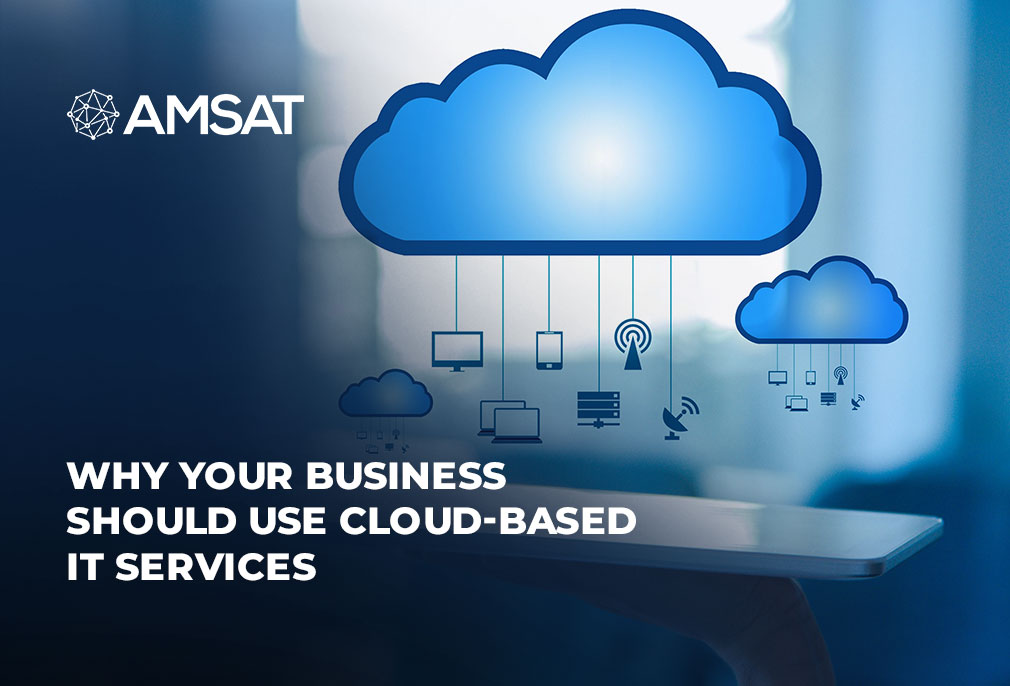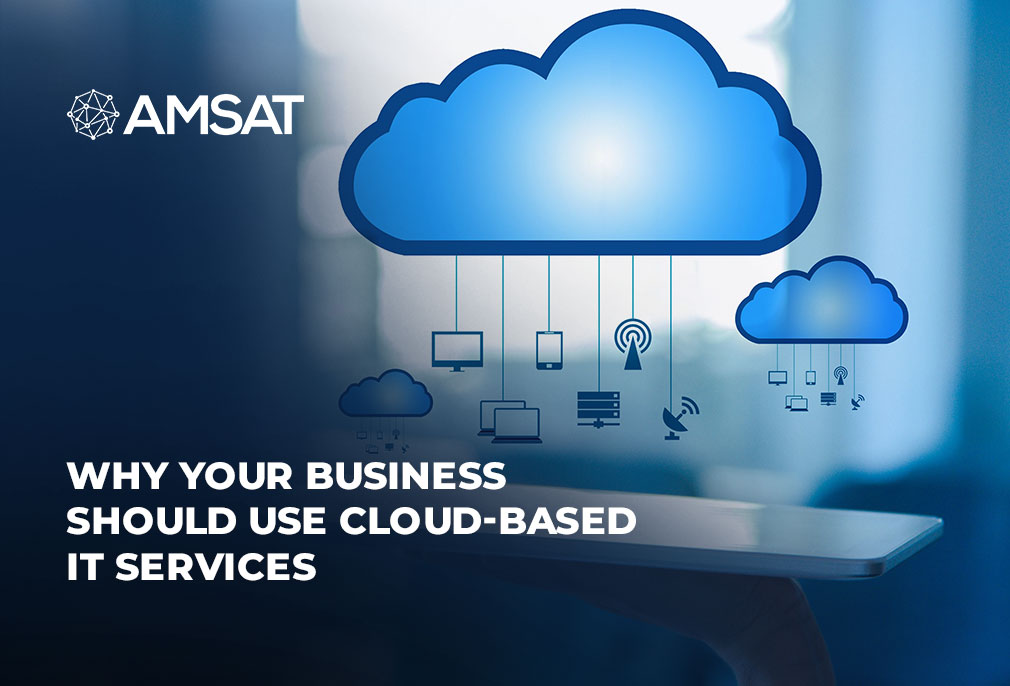Latest Blogs

By AMSAT April 26,2022
Why Your Business Should Use Cloud-Based IT Services
Thanks to the many benefits it offers, usage of the cloud is growing among all types of businesses. You may have heard that, in addition to the benefits of the cloud, it can also pose problems if not properly installed. This may make you wonder if cloud computing is good for you.
Any new technology comes with dangers, but the benefits of the cloud may exceed the disadvantages. If you take the correct precautions and work with the right partners, you can reduce the dangers and gain the benefits of cloud-based IT services.
Companies can use the cloud to access a number of IT services and apps, ranging from data backups to communications solutions.
Here are some reasons why your company should adopt cloud computing
Cloud Migration Benefits
Many of the benefits of cloud computing stem from its flexibility and accessibility, but the advantages of shifting to the cloud don’t end there. The following are some of the reasons why firms are migrating to the cloud:
- Reduced Total Cost: One of the key reasons why organizations prefer cloud-based IT is the low total cost. Because of the necessary hardware and deployment costs, as well as ongoing screening and updating by in-house people, on-premise solutions are frequently costly from the off. That doesn’t even take into account the costs of paying people to run the program. You get all the capability of an IT team and program with a SaaS subscription, but without the cost.
- Easy Application: On-premises software application can take months, if not years, of tweaking and re-tweaking as your company’s objectives and resources change. SaaS implementations, on the other hand, might take anything from a month to a half-year. The minimal coding required and the simple scaling and adjusting capabilities of these programs contribute to their ease of implementation. As a result, SaaS software lets your team promptly begin using the program and delivering value.
- Automatic Updates: When you buy on-premise software, it begins to age right away. Keeping your system updated with the latest technologies can be expensive and time-consuming to properly install. You instantly obtain the latest innovations with a cloud-based solution, with no hidden upgrade fees and minimum adjustments.
- Scalability and Flexibility: Cloud-based services are a great fit for businesses that are constantly growing or have fluctuating bandwidth demands. These internet-based services, by their very nature, scale to your usage with little to no adjustment, allowing organizations to take on more work with less effort.
- Security and Recovery: Data breaches can occur from a variety of sources, including lost computers and leaked passwords. Each incident has the potential to cost millions of dollars in terms of lost data, labor, and income. Cloud systems assist by encrypting data and storing it in a secure, centralized location, ensuring that hardware failures do not disrupt your productivity.
- Accessibility:Employees may access data from anywhere and continue working on the go with cloud-based applications. Some programs are even available on mobile devices. The cloud also allows for better team collaboration by allowing many groups to view and update the same data at the same time.
Risks of Embracing Cloud IT
The risks of cloud computing are just as well-known as the benefits. Cloud services, on the whole, carry many of the same risks as traditional on-premise services. Vulnerabilities can be found and exploited by malicious actors from the outside. Insiders may misuse their power or unintentionally create harm. You must take some measures regardless of the services you use.
The main distinction between traditional and cloud-based computing in terms of risks is that the cloud service provider (CSP) and the customer share risk reduction duty. To administer a cloud system properly, you must first understand this distinction. Businesses that employ cloud-based IT services must also take precautions to avoid cloud-specific hazards, such as:
- Less Control and Visibility: Hiring a third-party CSP to manage some of your data means you no longer have complete control. Some of your data may be stored on the cloud provider’s servers. You also don’t have full ownership of a cloud-based software product. Instead, you must pay a monthly charge to gain access to it. Users must ensure that they understand which responsibilities are theirs and which are the responsibility of the service provider in order to navigate this. This is dependent on the cloud service model.
- Inadequate Data Deletion: When you have complete control over all copies of your data, it’s simple to figure out where they’re all stored. When you use cloud storage, your data may be stored in many places by the CSP. It’s more difficult to tell whether all instances of data have been deleted when you remove it. Different cloud providers have different deletion mechanisms. To ensure that their information is completely destroyed, users must ensure that they understand the protocols of the organization with which they are working.
- Failed Separations: Because CSPs often serve several clients, they store data from a variety of sources. This broadens the attack surface and increases the number of potential flaws. A hacker might conceivably use these flaws to go around a cloud’s user separation. Although no attacks have been recorded as a result of logical separation failure, the notion has been demonstrated. Private clouds, which are not shared with other tenants, are sometimes used by organizations that handle very sensitive information.
It’s critical to provide training to staff when migrating to cloud-based IT services so that they understand how to use the new technology responsibly. Creating guidelines for data sharing, password updates, and mobile device use can all assist. It’s also critical to identify companies who follow proper security procedures. It’s also worth noting that avoiding the cloud can put you at a disadvantage, as it may cause you to fall behind your competition and force you to employ outdated technology.
TAGS
- Cloud IT services
Recent Blogs
Ready to Get Started?
Our specialists are ready to tailor our security service solutions to fit the needs of your organization.










